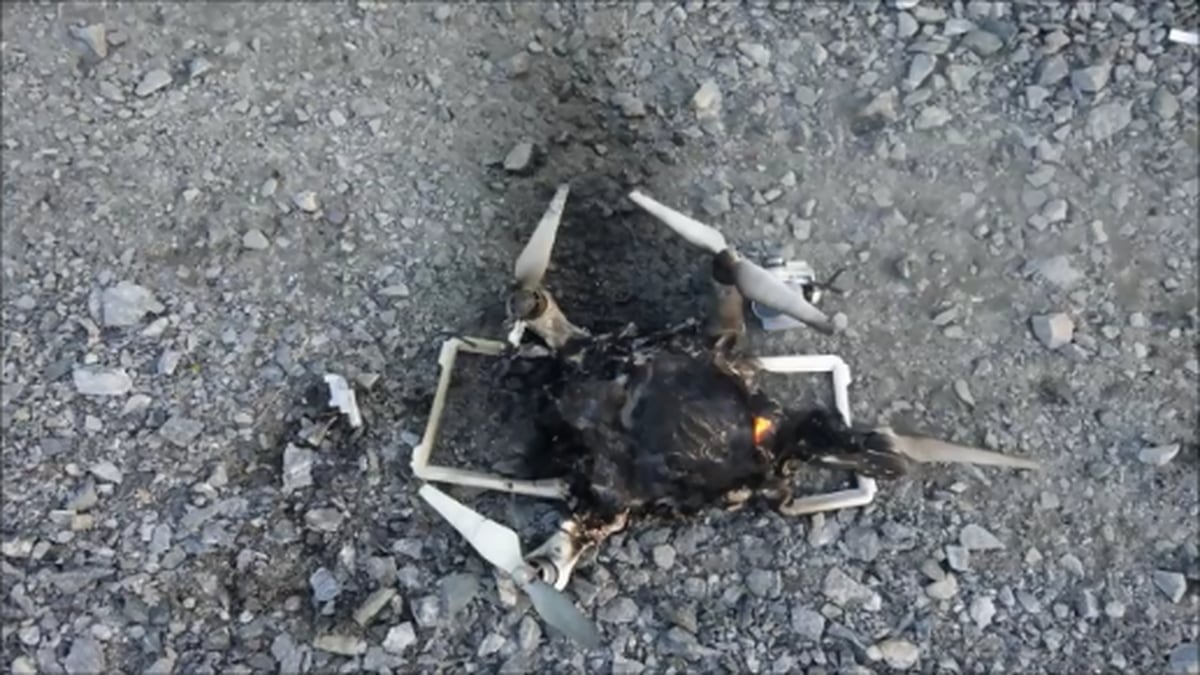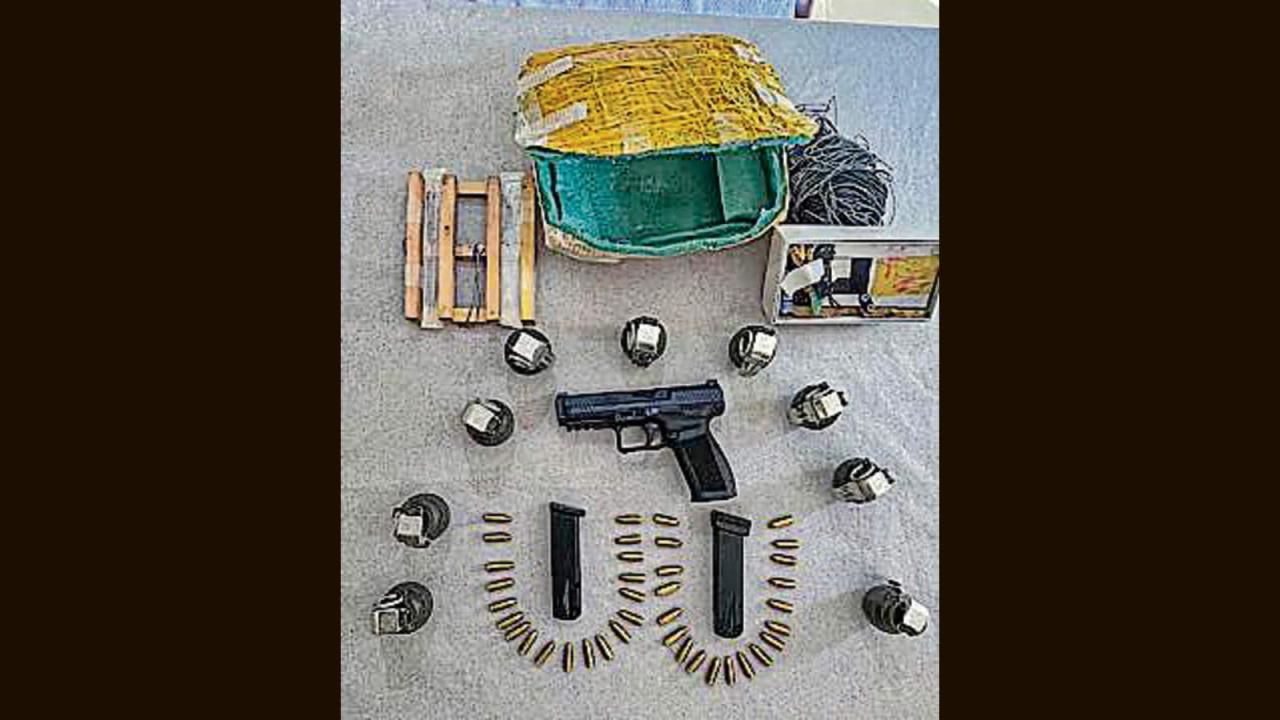Remington drone loads represent a significant advancement in efficient and versatile payload delivery. This guide explores the diverse Remington drone models, their capabilities, and the various applications where they excel. We will delve into payload types, safety regulations, operational scenarios, maintenance procedures, and the economic considerations involved in utilizing these advanced systems. Understanding these aspects is crucial for maximizing the benefits and minimizing potential risks associated with Remington drone operations.
From agricultural applications to search and rescue missions, Remington drones offer a flexible solution for a range of industries. This exploration will equip you with the knowledge needed to make informed decisions regarding the selection, operation, and maintenance of Remington drones for your specific needs. We’ll examine factors ranging from payload capacity and flight time to regulatory compliance and cost-effectiveness.
Remington Drone Models and Capabilities
Remington offers a diverse range of drones designed for various payload delivery needs. This section details the specifications and performance characteristics of several key models, highlighting their payload capacities and flight capabilities.
Remington Drone Model Comparison, Remington drone loads
The following table provides a comparison of several Remington drone models, outlining their key features and capabilities. Note that specific specifications may vary depending on configuration and upgrades.
Remington drone loads often require careful consideration of environmental factors, especially when operating in challenging conditions. For instance, understanding the current weather situation is crucial, which is why checking the live feed from the coquihalla weather camera could be beneficial before deploying a Remington drone in that area. This proactive approach ensures safe and efficient Remington drone load operations.
| Model Name | Payload Capacity (kg) | Flight Time (minutes) | Key Features |
|---|---|---|---|
| Remington X1 | 5 | 30 | High-speed flight, advanced obstacle avoidance, long-range communication |
| Remington X2 | 10 | 25 | Heavy-lift capacity, ruggedized design, enhanced stability |
| Remington X3 | 2 | 45 | Extended flight time, precision hovering, ideal for surveillance |
| Remington X4 | 15 | 20 | Exceptional payload capacity, suitable for large-scale delivery operations |
Payload Types and Transportation Methods
Remington drones are capable of transporting a wide variety of payloads, each requiring specific handling and securing methods. Understanding these methods is crucial for safe and efficient operation.
Payload Types and Transportation
- Medical Supplies: These are often secured in specialized, temperature-controlled containers within the drone’s payload bay. Secure fastenings prevent shifting during flight.
- Agricultural Products: Items like seeds or small farming tools are typically packaged in robust, weather-resistant containers to prevent damage and spillage.
- Emergency Relief Supplies: These can range from food and water to medical equipment, often packaged for quick and easy deployment. Securement focuses on preventing damage and ensuring swift access.
- Small Packages and Parcels: Standard delivery packages are secured using straps or netting within the drone’s cargo area to prevent movement.
Safety and Regulatory Compliance
Safe operation of Remington drones requires adherence to strict safety protocols and regulatory guidelines. This section Artikels essential procedures and best practices to ensure safe and legal operation.
Pre-Flight Inspection Checklist

A thorough pre-flight inspection is crucial for safe drone operation. This checklist ensures all systems are functioning correctly and potential hazards are identified before flight.
- Inspect drone for any physical damage.
- Check battery levels and connections.
- Verify GPS signal and satellite connection.
- Inspect propellers for damage or imbalance.
- Confirm payload is securely fastened.
- Review flight plan and check for any potential hazards.
- Confirm compliance with local regulations and airspace restrictions.
Operational Scenarios and Applications
Remington drones find application across various sectors, significantly improving efficiency and accessibility in payload delivery. This section illustrates several real-world examples.
Hypothetical Delivery Scenario

Imagine a scenario where a Remington X2 drone is tasked with delivering medical supplies to a remote village inaccessible by road. The drone, loaded with a temperature-controlled container holding essential medications, navigates using GPS and advanced obstacle avoidance systems. The flight is monitored remotely, and the payload is successfully delivered, ensuring timely access to critical medical care. Potential challenges included strong winds and mountainous terrain, which were mitigated by the drone’s robust design and advanced flight controls.
Technical Specifications and Maintenance: Remington Drone Loads
Understanding the technical specifications and maintenance requirements of Remington drones is vital for ensuring optimal performance and longevity. Regular maintenance prevents malfunctions and extends the operational lifespan of the drones.
Routine Maintenance Schedule
| Task | Frequency | Tools Required | Procedure |
|---|---|---|---|
| Battery Inspection | Before each flight | Multimeter | Check battery voltage and for any signs of damage. |
| Propeller Inspection | Before each flight | Visual Inspection | Check for cracks, chips, or any signs of wear. |
| Motor Inspection | Weekly | Screwdriver | Check for loose screws and signs of wear and tear. |
| Software Update | Monthly | Computer and Software | Update flight control software and firmware as necessary. |
Economic Considerations and Cost Analysis
The economic viability of using Remington drones depends on several factors, including initial investment, operational costs, and potential cost savings compared to traditional methods. A comprehensive cost-benefit analysis is essential for making informed decisions.
Cost-Benefit Analysis Example

In a hypothetical comparison of delivering medical supplies to a remote area, using a Remington drone versus a traditional helicopter, the drone demonstrated significantly lower operational costs per delivery, including fuel, maintenance, and pilot salaries. While the initial investment in the drone was higher, the long-term cost savings and increased delivery frequency made it a more cost-effective solution over time.
Factors like the distance to the delivery point, frequency of deliveries, and payload weight significantly influenced the overall cost-effectiveness.
The use of Remington drones for payload delivery signifies a shift towards more efficient and adaptable solutions across numerous sectors. By understanding the nuances of drone selection, payload management, safety protocols, and economic implications, organizations can harness the full potential of this technology. This guide provides a foundational understanding, enabling informed decision-making and the safe, effective integration of Remington drones into various operational contexts.
Popular Questions
What is the warranty period for Remington drones?
Warranty periods vary depending on the specific model and purchase location. Consult the manufacturer’s documentation or your retailer for details.
What types of batteries are used in Remington drones?
Remington drones typically utilize lithium-polymer (LiPo) batteries. Specific battery types and capacities vary by model.
Remington drone loads often necessitate careful consideration of payload capacity. Understanding the capabilities of your drone is crucial, and this is especially true when you consider the added weight of accessories like a high-quality camera. For instance, if you’re looking for a drone with excellent camera capabilities, check out this selection of drones with camera: drone with camera.
Returning to Remington drone loads, remember that even small additions can impact flight time and stability, so always plan accordingly.
Are there any limitations on the flight range of Remington drones?
Yes, flight range is limited by factors such as battery life, payload weight, and environmental conditions. Consult the specifications for each model.
How often should I perform maintenance on my Remington drone?
Regular maintenance schedules are Artikeld in the user manual. Frequency depends on usage and environmental factors but generally involves pre-flight checks and periodic component inspections.
